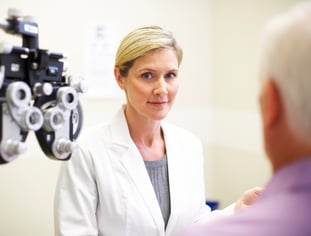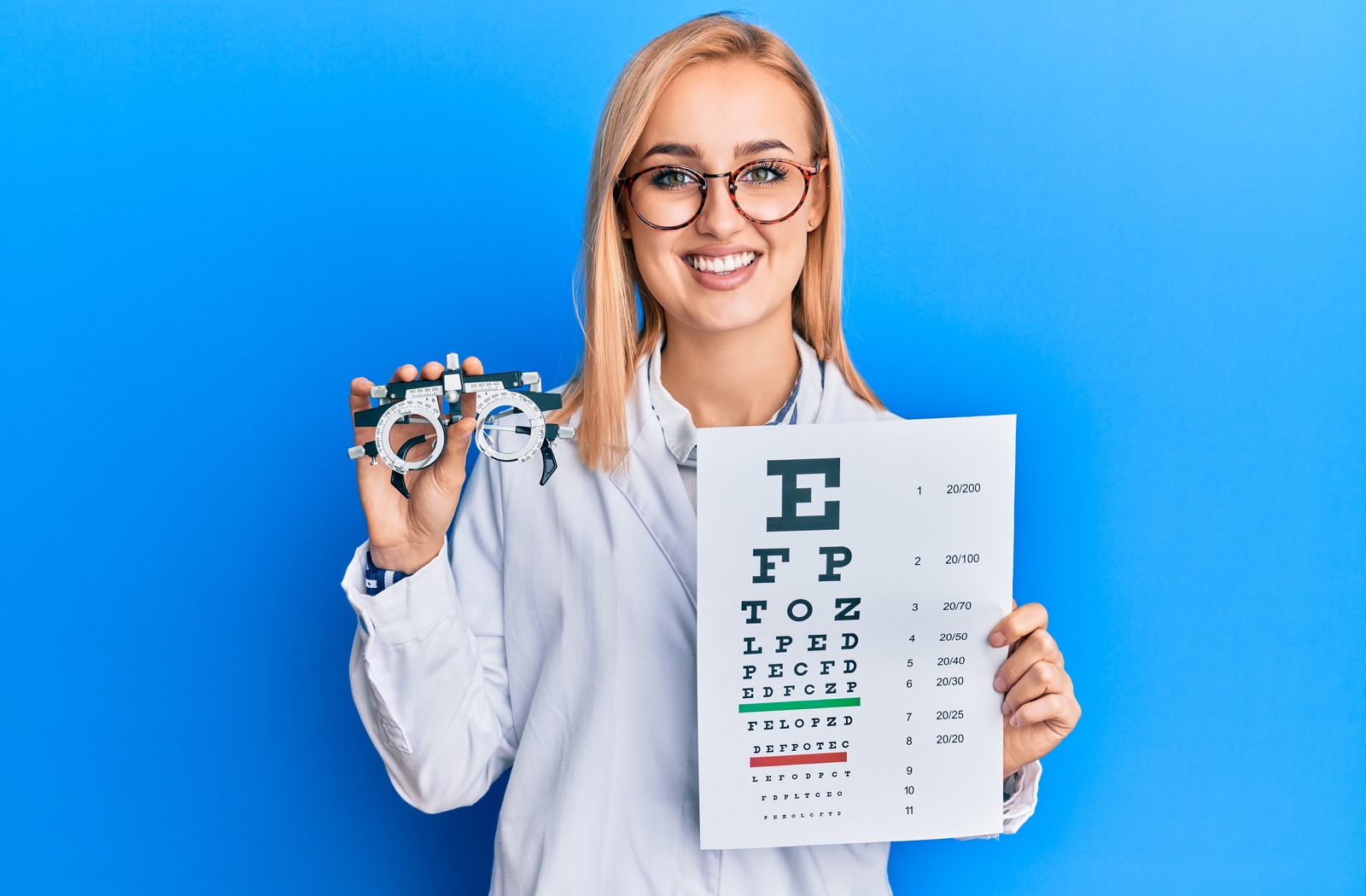Why Picking an Eye Doctor Optometrist is Necessary for Your Eyes
Why Picking an Eye Doctor Optometrist is Necessary for Your Eyes
Blog Article
Exploring the Most Current Technological Developments in Optometry and What They Mean for Eye Doctors
From the precision of Optical Comprehensibility Tomography to the nuanced insights supplied by AI-driven analysis tools, these developments are setting new criteria in client assessment and therapy. As these innovations permeate the technique, optometrists are faced with the challenge of embracing these devices to boost person results.
Innovations in Diagnostic Devices
Advancing the field of optometry, innovations in diagnostic devices have reinvented the means eye treatment specialists evaluate and detect ocular problems and aesthetic disabilities. The previous decade has actually seen substantial technical innovations, enabling even more accurate and detailed analyses.
An additional key innovation is the introduction of sophisticated corneal topography systems, which map the surface area curvature of the cornea with accuracy. These devices are particularly useful for suitable call lenses and detecting corneal problems. In addition, electronic retinal imaging has changed standard ophthalmoscopy, providing thorough, panoramic sights of the retina that help with detailed visual exams.
The growth of wavefront aberrometry has actually additionally been important, making it possible for the evaluation of refractive mistakes with unmatched accuracy (Opticore Optometry). This technology helps in tailoring rehabilitative lenses and boosting surgical end results for refractive surgeries. Jointly, these analysis developments equip eye doctors to provide remarkable person treatment, making sure very early treatment and customized treatment techniques, inevitably boosting visual health and wellness outcomes
AI in Individual Monitoring
Building on the foundation of advanced diagnostic devices, the unification of artificial intelligence (AI) in person management represents a transformative jump for optometry. AI systems are progressively used to enhance effectiveness, precision, and personalization in person care.
Furthermore, AI-driven systems help with streamlined individual communications and management procedures. Automated organizing, virtual examinations, and individualized follow-up strategies not only enhance individual fulfillment yet additionally maximize time administration for specialists. These systems can triage individuals based upon the necessity of their conditions, making certain that those in important demand receive prompt attention.
Additionally, AI enhances decision-making by offering optometrists with evidence-based recommendations and therapy paths. By integrating data from electronic health documents, AI tools supply insights that educate professional choices, reducing the danger of errors and boosting patient results. As AI remains to progress, its function in individual administration will likely broaden, improving the landscape of optometric treatment.
Developments in Retinal Imaging
In the world of optometry, retinal imaging has actually witnessed remarkable technical advancements that are boosting diagnostic capabilities and client care. Innovations such as Optical Comprehensibility Tomography (OCT) and fundus digital photography have actually revolutionized exactly how eye doctors envision and analyze the retina. OCT, particularly, supplies high-resolution, cross-sectional pictures of the retina, permitting for the in-depth assessment of its layers. This capability is vital for very early discovery and administration of problems like glaucoma, diabetic retinopathy, and age-related macular degeneration.
Boosted imaging methods like OCT angiography are more refining analysis precision. Eye Doctor. Such improvements promote the identification of minute retinal changes that could signify illness development.
Moreover, innovations in fabricated knowledge are augmenting retinal imaging by allowing automatic evaluation of large datasets. These systems assist optometrists in recognizing patterns a sign of pathology, consequently improving diagnostic accuracy and performance. Collectively, these technologies are transforming retinal imaging right into a foundation of modern-day eye treatment, enhancing end results and increasing restorative opportunities.
Teleoptometry's Expanding Duty
Teleoptometry is increasingly becoming an essential component of eye care, driven by improvements in data and diagnostic tools. As optometry embraces digital makeover, teleoptometry facilitates remote assessments, permitting eye doctors to expand their solutions past traditional boundaries. This is especially helpful in underserved and country areas where access to specialized eye treatment is commonly limited. By leveraging high-resolution video conferencing and progressed retinal imaging, eye doctors can conduct extensive eye tests from afar, making certain prompt diagnosis and therapy.
The combination of fabricated knowledge (AI) more enhances teleoptometry, allowing the analysis of visual information and aiding in the detection of ocular conditions such as glaucoma and diabetic retinopathy. AI-powered algorithms can swiftly analyze complicated imaging data, offering optometrists with beneficial understandings that strengthen scientific decision-making.
In addition, teleoptometry sustains connection of care with smooth integration with electronic health and wellness documents (EHRs), permitting optometrists to keep comprehensive individual histories. When consulting with various practitioners., this makes sure that patients get regular and customized care even.
Despite these advantages, challenges remain, consisting of ensuring information safety and security and taking care of patient assumptions. However, teleoptometry represents a substantial stride find out here in the direction of more obtainable, efficient, and patient-centered eye care. As technology progresses, its function is positioned to increase further.

Future Patterns in Eye Care
A myriad of innovative patterns is established to improve the future of eye treatment, driven by technological innovations and the evolving demands of people. One substantial trend is the integration of synthetic knowledge (AI) in diagnostics, which guarantees to enhance the accuracy and performance of eye exams. AI algorithms can examine huge amounts of information from retinal pictures, possibly spotting conditions like diabetic retinopathy and glaucoma earlier than standard methods.
In addition, customized medication is gaining traction in optometry, with genetic testing informing tailored therapy strategies. This approach aims to maximize client end results by customizing treatments to private hereditary accounts. Wearable innovation, such as smart contact lenses, is also coming up, offering real-time surveillance of intraocular pressure or sugar levels, hence supplying continual understandings right into systemic and eye health and wellness.
The fostering of augmented truth (AR) and digital reality (VIRTUAL REALITY) in training and patient education and learning is another emerging trend. These innovations offer immersive experiences that can improve understanding and abilities both for people and eye doctors. As these trends advance, eye doctors should stay abreast of technological innovations to give advanced care, making certain enhanced patient results and complete satisfaction in the dynamic landscape of eye care.
Final Thought

Collectively, these analysis improvements equip eye doctors to supply premium person treatment, guaranteeing very early intervention and tailored therapy methods, inevitably improving visual health and wellness results.

As these technologies click here now proceed to progress, eye doctors need to adapt and incorporate them into practice, ultimately optimizing workflow effectiveness and raising the standard of eye treatment delivered to patients.
Report this page